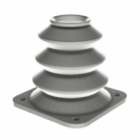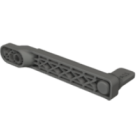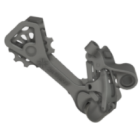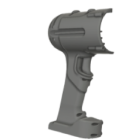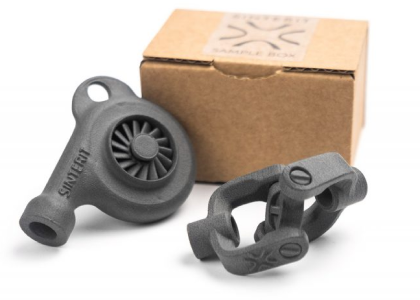Trends in additive manufacturing
Additive manufacturing — often used interchangeably with 3D printing — is rapidly maturing into a production-grade technology that touches nearly every advanced industry. What began as a prototyping tool is now a strategic enabler in sectors ranging from aerospace to healthcare. As the ecosystem of materials, machines, and software evolves, so do the possibilities. Understanding current and emerging trends in additive manufacturing is critical for businesses aiming to stay competitive, agile, and future-ready.
From prototyping to production
The most fundamental shift in additive manufacturing is its growing role beyond prototyping — especially in short-run and customized production. While not yet widely cost-effective for high-volume manufacturing, 3D printing is becoming a viable method for producing complex or personalized end-use parts, particularly where traditional methods like injection molding or CNC remain less flexible or economically viable at small scale.
Technologies like SLS (Selective Laser Sintering), MJF (Multi Jet Fusion), and DMLS (Direct Metal Laser Sintering) are already supporting low-volume production in sectors such as aerospace, medical, and advanced industrial applications. Companies are moving toward on-demand manufacturing, replacing tooling and physical inventory with digital part libraries. This shift is no longer theoretical — it’s already taking place in select industries where agility and part complexity are critical.
Rise of application-specific materials
Material innovation is another driving force behind additive manufacturing trends. We’re witnessing a growing emphasis on application-specific materials — composites for tooling, medical-grade resins, flame-retardant polymers, ESD-safe nylons, and even biocompatible or recyclable powders.
This development isn’t just about variety — it’s about performance-driven design. The more engineers can rely on 3D-printed parts to meet stringent mechanical, thermal, or chemical requirements, the more AM becomes a default manufacturing option rather than a backup.
Integration into digital workflows
As additive manufacturing becomes more central to operations, it’s also becoming more connected. Companies are increasingly integrating 3D printing into their broader digital manufacturing workflows, including PLM (Product Lifecycle Management), ERP (Enterprise Resource Planning), and MES (Manufacturing Execution Systems).
This connectivity enables smarter production pipelines — with part traceability, automated quality checks, real-time performance data, and cloud-based control of printer fleets. Additive is no longer a standalone lab activity — it’s becoming part of the industrial fabric.
AI-powered design and optimization
Generative design and simulation-driven workflows are transforming how products are designed for additive. These algorithms prioritize weight reduction, material savings, and performance — all while aligning with the freedom offered by layer-by-layer production. As these tools become more accessible, design engineers are increasingly creating function-first, print-optimized components rather than adapting old designs.
Sustainability and circularity
With pressure mounting on manufacturers to reduce waste, lower emissions, and build more sustainable supply chains, 3D printing is finding a role not only in reducing material use, but also in enabling circular manufacturing models.
Powder-based systems like SLS and MJF already allow for high material reuse rates. Meanwhile, ongoing research into recycled feedstocks and biodegradable resins shows promise. As companies track carbon output and material origin more closely, sustainability will be a competitive driver, not just a compliance issue.
Decentralized and localized manufacturing
The COVID-19 pandemic highlighted the fragility of global supply chains. One of the resulting shifts is the rise of localized, on-demand production powered by additive manufacturing. Whether it’s spare parts printed in-field, tools fabricated at point of need, or custom devices manufactured close to the user — the trend is moving toward agility and independence from traditional logistics.
Additive as a core strategy
The final and perhaps most important trend is strategic. Additive manufacturing is no longer just an R&D tool. It’s becoming a core capability for forward-thinking companies — a way to speed up product development, reduce waste, shorten iteration loops, and unlock new business models.
In many cases, it’s not about replacing traditional manufacturing — but about complementing it in ways that were impossible a decade ago. That might mean using 3D printing to prototype faster, to create jigs and fixtures, to offer mass-customized products, or to develop low-volume production with unmatched design freedom.
Conclusion: embracing the shift
These trends in additive manufacturing are shaping a future where design is more agile, production is more flexible, and innovation cycles are dramatically faster. Companies that understand and embrace these shifts won’t just be reacting to the future — they’ll be leading it.
The age of additive manufacturing isn’t coming. It’s already here — and the smartest companies are using it to their advantage.
Explore also
- Is 3D printing the future?
- What is the future of 3D printing?
- Future uses of 3D printing
- 3D printing vs traditional manufacturing
- What will 3D printers be used for in the future
- AI in 3D printing
- Automation 3D printing
- Next-generation 3D printing materials
Related categories




